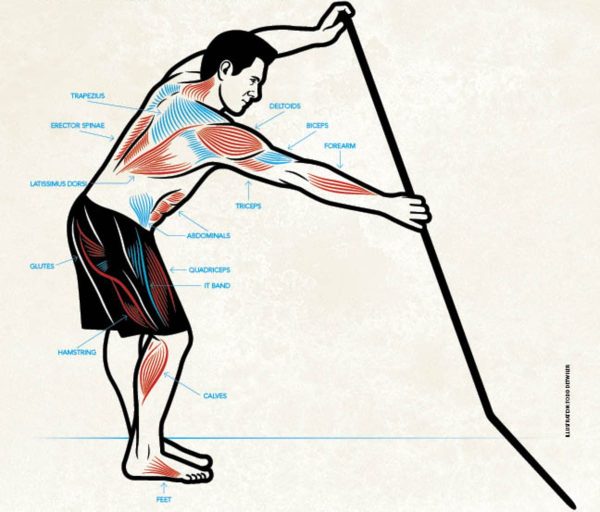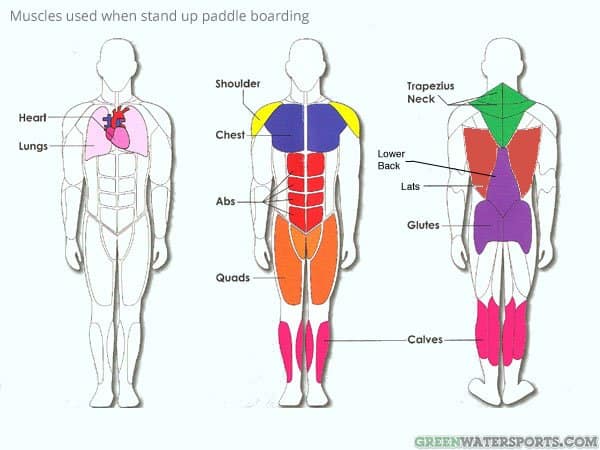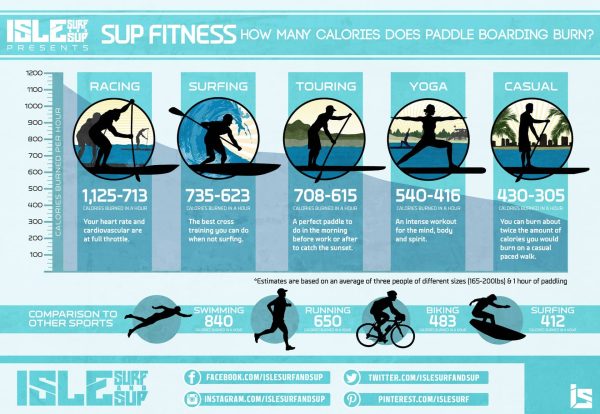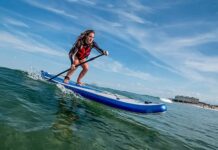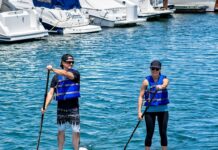Have you ever wondered what muscles stand-up paddleboarding (SUP) fitness targets? Well, wonder no more! In this article, we will explore the various muscles that SUP fitness works out. Whether you’re a beginner or an experienced paddleboarder, understanding which muscle groups are being engaged during your workout can help you maximize the benefits and enhance your overall fitness level. So, let’s dive in and discover the incredible physical benefits that SUP fitness can provide.
This image is property of www.mensjournal.com.
Overview
Welcome to our comprehensive guide on SUP Fitness! In this article, we will explore what SUP Fitness is, its numerous benefits, and the key muscles that are targeted during SUP workouts. Whether you’re a beginner or a seasoned fitness enthusiast, SUP Fitness can be a fun and effective way to engage your entire body, improve balance and stability, and enhance overall fitness levels.
What is SUP Fitness?
SUP Fitness, also known as Stand-Up Paddleboard Fitness, combines the principles of paddleboarding with various fitness exercises. It involves performing a range of workouts on a paddleboard in the water, providing a unique and challenging experience. From paddling and yoga to strength training and cardio, SUP Fitness offers a versatile fitness regimen that can be tailored to suit any fitness level.
The Benefits of SUP Fitness
Engaging in SUP Fitness offers an array of benefits that go beyond traditional land-based workouts. Not only does it provide a refreshing change of scenery, but it also challenges your body in a dynamic environment. Let’s explore some of the key advantages of SUP Fitness:
Key Muscles Targeted in SUP Fitness
SUP Fitness is a full-body workout that engages multiple muscle groups simultaneously. To fully understand its benefits, let’s take a closer look at the specific muscles targeted in SUP Fitness:
Upper Body Muscles
- Shoulders: Paddling on a SUP board requires the use of your shoulder muscles, particularly the deltoids, which are responsible for the rotational movements of your arms.
- Arms: SUP Fitness strengthens your arms, including the biceps and triceps, as you engage in various paddle strokes and perform exercises that involve lifting and pushing movements.
- Chest: While paddling, your chest muscles, especially the pectoralis major and minor, are continually engaged, helping to build a strong upper body.
- Back: SUP Fitness works your back muscles, including the latissimus dorsi, trapezius, and rhomboids, which stabilize and support your movements on the board.
Core Muscles
- Abdominals: Balancing on a paddleboard activates your core muscles, including the rectus abdominis (six-pack muscles) and the deeper transverse abdominis, helping to improve your overall core strength.
- Obliques: SUP Fitness engages the oblique muscles on the sides of your abdomen, which assist in rotational movements and stabilization.
- Lower Back: The muscles in your lower back, such as the erector spinae, are constantly engaged during SUP Fitness to maintain a stable and balanced posture.
Lower Body Muscles
- Legs: A variety of leg muscles are activated during SUP Fitness, including the quadriceps, hamstrings, and calves. These muscles work together to maintain balance, stability, and provide power for paddling.
- Hips: SUP Fitness targets the muscles around your hips, such as the hip flexors and gluteus medius, enhancing stability and mobility in this area.
- Glutes: Paddling and performing exercises on a paddleboard engages your gluteal muscles, including the gluteus maximus, gluteus medius, and gluteus minimus, helping to tone and strengthen your backside.
Balance and Stability Muscles
- Core Muscles: SUP Fitness heavily relies on your core muscles, including the abdominals, obliques, and lower back, to maintain balance and stability on the unstable surface of the paddleboard.
- Leg Muscles: The muscles in your legs, particularly your glutes, quadriceps, and calves, play a crucial role in stabilizing your body and adjusting to the constant changes in water movement.
- Ankle Muscles: Stand-Up Paddleboarding requires constant adjustment and control of your ankles, activating the muscles in this area and enhancing your balance and stability.
Cardiovascular System
- Heart: Engaging in SUP Fitness provides an excellent cardiovascular workout. Paddling against the resistance of the water elevates your heart rate, promoting cardiovascular health and endurance.
- Lungs: Breathing deeply while engaging in SUP Fitness helps improve lung capacity and efficiency, enhancing your overall respiratory system and oxygen intake.
This image is property of greenwatersports.com.
Full Body Workout
One of the significant advantages of SUP Fitness is that it offers a comprehensive full-body workout. This means that multiple muscle groups are engaged simultaneously, maximizing the efficiency of your exercise routine. Let’s delve deeper into the components that make SUP Fitness an excellent full-body workout:
Engagement of Multiple Muscle Groups
SUP Fitness requires the use of various muscle groups throughout your entire body. From paddling and balancing to performing strength and yoga exercises, virtually every muscle is challenged during your SUP workout. This holistic approach ensures that no muscle is left untouched, promoting overall strength, endurance, and muscular balance.
Integration of Stabilizer Muscles
In addition to targeting major muscle groups, SUP Fitness also focuses on activating stabilizer muscles. These muscles play a vital role in maintaining balance, stability, and coordination. By training these smaller, supportive muscles, SUP Fitness helps enhance overall body control and injury prevention.
Preventing Muscular Imbalances
Muscular imbalances occur when certain muscles become stronger or tighter than others, leading to postural issues and increased risk of injury. SUP Fitness can help prevent these imbalances by strengthening weak muscles and improving posture:
Strengthening Weak Muscles
SUP Fitness engages and strengthens muscles that are often underutilized in traditional workouts, helping to address any imbalances. Whether it’s the small stabilizer muscles, core muscles, or specific muscle groups in your upper and lower body, regular SUP Fitness workouts can create a more balanced and harmonious muscular structure.
Improving Posture
A strong core and balanced muscle development are crucial for maintaining good posture. By targeting the muscles involved in proper posture, like the core, back, and shoulders, SUP Fitness improves postural alignment, reducing the risk of chronic pain and discomfort.
This image is property of www.supworldmag.com.
Functional Fitness
SUP Fitness goes beyond the confines of a gym or fitness studio, offering functional fitness benefits that translate to real-life activities:
Enhancing Overall Performance
The functional movements performed during SUP Fitness mimic everyday activities such as walking, lifting, and carrying. By improving your overall strength, balance, and coordination, SUP Fitness enhances your performance in daily tasks, making them easier and more efficient.
Improving Everyday Activities
The stability and balance training provided by SUP Fitness can improve your performance in various sports and recreational activities. Whether it’s hiking, golfing, or simply navigating uneven terrain, the skills acquired through SUP Fitness can be applied to various physical endeavors.
Conclusion
SUP Fitness provides a refreshing and effective way to engage your entire body, improve balance and stability, and enhance your overall fitness levels. From the upper body and core to the lower body and stabilizer muscles, SUP Fitness targets multiple muscle groups simultaneously, offering a comprehensive full-body workout. By preventing muscular imbalances, improving posture, and enhancing functional fitness, SUP Fitness can positively impact your overall health and well-being. So grab a paddleboard, head out onto the water, and experience the countless benefits of SUP Fitness for yourself!
This image is property of www.jobesports.com.


